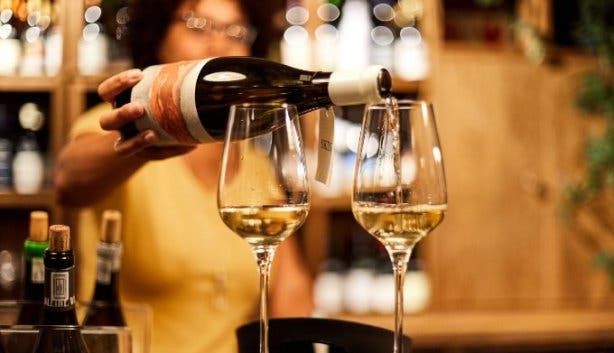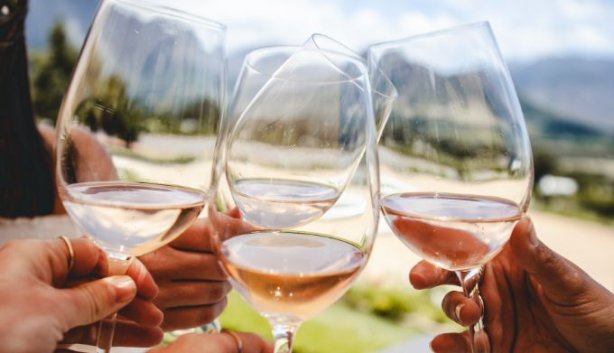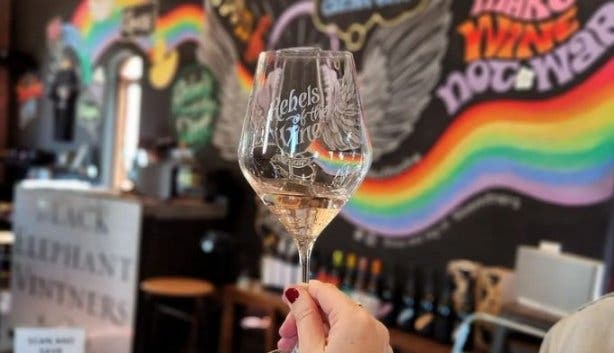![]() Killarney turns into Cape Town’s ...
Killarney turns into Cape Town’s ...
Tickets for kids from R10! And you can bring your own food



| For Moments of Joy. Follow our social channels for useful news, daily local champions | |
 | 072 350 2062 |
 | Ideas Cartel, The Old Foundry, 1 Sand Hill Road, Green Point |
 | www.capetownmagazine.com/subscribe |
 | now@capetownmagazine.com |
 | CapeTownMag |
 | CapeTownMagazine.com |
 | capetownmag |
Also read: You can taste 20+ wines at a Tulum-style beach club with Chim’s Wine Tasting.
---
We’ve all seen it before: a bespectacled wine connoisseur sipping, sniffing and swirling a glass of vino, considering each step like it may contain the answer to the meaning of life, only to eventually spit out the liquid like it has left a bad taste on the palate. And if you, like so many, have asked yourself, “what does it all mean?”, well that’s where we come in.
With the help of Wine Flies tour guide and vino expert Riaan Renke, we’ve put together a beginner’s guide to wine tasting. After all, a sip-and-swirl session is one the most popular things to do in and around Cape Town.
Why learn more about the ins and outs of wine? Well, the more refined your sensory abilities, the better you’re able to understand and enjoy the nuances possessed by great wines. Not to mention, knowledge is power, and the more you know about vino, the easier it will be to suss out what kind of wine you enjoy the most.
Pre-guide tip: Always hold the glass by the stem and not by the bowl during a session. Doing the latter might heat the wine, disrupt its optimal temperature and therefore alter your experience of it.
A STEP-BY-STEP GUIDE TO WINE TASTING FOR BEGINNERS
The look
Hold the glass directly in front of your face and tilt it slightly. This will enable you do look at the colour of the core as well as the hues of the rim. If possible, do so in front of a white background to get an objective, clear view. You are looking for clarity (haziness or cloudiness can either indicate an unfiltered or faulty wine) and intensity of the colour. Why? Well, as Riaan clarifies: “The colour of the wine depicts its age”. A lighter liquid indicates that the wine is fairly young, while a deeper, richer colour means that the vino is older. Do note that the colour in older red wines changes to a brownish red.
Next you can give the wine a gentle swirl - make sure the contents get swished around the entire bowl. When you spin your wine you create a thin film of wine on the inside of the glass and will see droplets, or so-called “legs”, running down the sides. The aptly named legs are used to determine a red or white wine’s body: thin legs equal a light body and thicker legs imply a fuller body. These are terms used to describe the general weight or texture of a wine in your mouth. Full-bodied wines are bold and powerful. In contrast, light-bodied wines are more delicate and refined. Furthermore, wines with high alcohol levels collect more droplets on the sides of the glass than those with lower levels.
Riaan’s swirl tip: “Swirl the wine in your glass by rotating your wrist. This takes a little practice. Most people have trouble at first because they are moving their entire arm to swirl the glass. The key is in the wrist.”
The aroma or “nose”
To experience the full aromatic spectrum of a wine, a good swirl is essential. Letting the wine dance in the glass increases its interaction with oxygen, which will release fragrant molecules and enrich the tasting experience. “Place your nose just over the edge of the wine glass,” explains Riaan. “Keep your mouth open. The aromas should bounce off this edge straight up the nostrils. Take a very deep sniff. Identify any familiar smells. Repeat, but rest your sense of smell a few seconds before you inhale again”. Do this to glean your first impressions of the aromas of the wine. Try to identify families of scents rather than specific ones: words like "fruity" or "floral" are sufficient at this stage. The more advanced sommelier will be able to pick up specifics like guava and rose, for example.
If the aroma is cardboard-y or musty, then it could be “corked”. This means that the liquid has been contaminated with 2,4,6-Trichloroanisole (TCA), an airborne fungus that infiltrates the cork and consequently masks the normal/ intended aroma(s) of the vino. The fungus is harmless to humans, but the smell – and therefore the taste - can be very off-putting.
Riaan’s advice: “You must remember that your sense of smell can be subjective, so hazard a guess at what your nose picks up. If you get really funny looks from the wine tasting assistant and the majority of your group because you mentioned dung beetle or bathroom floor, consider making an appointment with an ear, throat and nose specialist before your next wine tasting trip. Or just ignore them and carry on with your bizarre descriptions, because after all, it is what you smell.”
The taste or “palate”
We know what you are thinking: Finally! But, before you get too excited, there is some technique that needs to be applied to this stage of the process as well. For starters, your first sip should be accompanied by an intake of air (this is a little tricky, but you will get the hang of it), which will once again aerate the wine and release more aromas. This is called “trilling”, if you really want to be fancy about it. “Roll the wine over your tongue for several seconds before swallowing. Exhale through your nose as you swallow. Your taste buds and sense of smell will work together,” adds Riaan. Next you have to “chew” the wine. Yes, chew. This is basically swishing the wine like you would a mouthwash, which will help coat your entire mouth. At the back of the mouth, there is a passageway that leads directly to the spot high in the nasal cavity that contains the smell receptors that inform your brain. This effect of smelling through your mouth is called retro-olfaction. The idea is to then compare the scents and aromas you discovered with your nose with those you experience with your mouth. The taste of a wine comprises two basic elements: flavour and structure. The former will be something like blackberry, chocolate or lemon and the latter indicates the level of sweetness, alcohol, acidity, and tannin.
If all of the above strike a good balance, i.e. no one element must dominate, then this usually means it is a good quality wine.
The evaluation
Officially, this is the final step in the wine tasting process. Take one last sip, spit or swallow and as soon as the vino is no longer in your mouth, try and determine how long you can still experience the aromas (not tastes!). The longer you perceive the aromas, the better the quality of wine. This is called the persistence of the wine.
Some final thoughts from vino expert Riaan Renke: “Developing the skill of wine tasting takes practice. The more wines you taste, the better you will become with this entire sensory process."
![]() Killarney turns into Cape Town’s ...
Killarney turns into Cape Town’s ...
Tickets for kids from R10! And you can bring your own food
![]() Knysna, but not the Knysna you think
Knysna, but not the Knysna you think
Locals help us uncover the hidden treasures of this Garden Route gem
![]() The captivating science-meets-music ...
The captivating science-meets-music ...
Sold out 50 times in Gauteng with rave reviews. See why
![]() Cape Town’s top African drumming ...
Cape Town’s top African drumming ...
A layered story of South Africa’s musical traditions
![]() What locals don’t know about Table ...
What locals don’t know about Table ...
Cape Town’s highest bar (no ticket needed), free tours + more
![]() Rum, brandy & gin tastings with your ...
Rum, brandy & gin tastings with your ...
Unusual cuts prepped in-house and a curious gin atomiser
![]() Norval Foundation, the art museum with ...
Norval Foundation, the art museum with ...
Unmissable summer exhibitions, picnics amongst the sculptures, & more
![]() The hidden seaside bistro on the ...
The hidden seaside bistro on the ...
Inventive small plates best explored with a wine pairing
![]() Reasons to visit this beach-side family ...
Reasons to visit this beach-side family ...
DIY waffles, loaded hotdogs, poke bowls, right on the beach
![]() Meet 100 bronze life-size figures at ...
Meet 100 bronze life-size figures at ...
From famous heroes like Mandela to forgotten ones like Autshumato
![]() This Sunday brunch could be your new ...
This Sunday brunch could be your new ...
At this bottomless brunch buffet, kids eat for half price
![]() Amazing cocktail & food specials at ...
Amazing cocktail & food specials at ...
Daily happy hour, free starters & welcome drinks, and more
![]() Ficks, Hermanus’s tidal pool ...
Ficks, Hermanus’s tidal pool ...
Just as wonderful at night & during the cooler months
![]() The café creating space for ...
The café creating space for ...
It’s hidden in Hermanus. Here’s how to find it